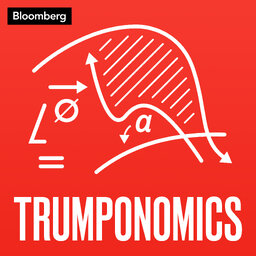Why China's Population Is About to Plunge
Is a trade war or surging debt the biggest threat to China's economy? Try declining fertility. While the nation recently relaxed its one-child policy, such moves are unlikely to head off a projected plunge in population that will constrain the country in coming decades. In the second of a two-part episode on falling global fertility, Scott Lanman talks with Cai Yong, an expert in Chinese demographics at the University of North Carolina, about the challenges facing the world's second-biggest economy.
 Trumponomics
Trumponomics


